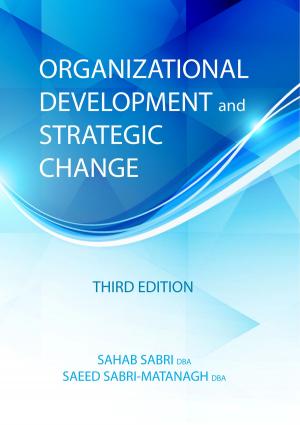Employee Emotions + Personality in Organizations
2 Books in 1
Business & Finance, Human Resources & Personnel Management, Organizational Behavior, Management & Leadership, Decision Making & Problem Solving, Leadership| Author: | Louis Bevoc | ISBN: | 1230001218282 |
| Publisher: | Nutriniche System LLC | Publication: | July 6, 2016 |
| Imprint: | Language: | English |
| Author: | Louis Bevoc |
| ISBN: | 1230001218282 |
| Publisher: | Nutriniche System LLC |
| Publication: | July 6, 2016 |
| Imprint: | |
| Language: | English |
ATTENTION COLLEGE STUDENTS: If you need to write a paper on employee emotions or personality in organizations, then this is the perfect reference. It's simple, easy to understand, and right to the point.
Employee Emotions
This eBook was written for people to gain a better understanding of employee emotions and their effects on work related behavior. Specifically, it describes the difference between emotions and moods, defines basic types of emotions, discusses effects of emotions, and notes the importance of emotional intelligence. Examples are used throughout for illustration and clarification purposes.
If you are interested in the connection between workplace emotions and employee conduct, then this book is for you. Read on, and educate yourself in an important aspect of organizational behavior.
Personality in Organizations
Everyone has different personalities, and those personalities play a major role in their happiness at work. Leaders in many organizations realize this, and that is why they invest time and money into understanding personality in the workplace.
This eBook examines the concept of personality, its importance in organizations, and its influence on employee behavior. First, the five major dimensions of personality are discussed. These include openness to experience, conscientiousness, extraversion, agreeableness, and neuroticism. Next, those dimensions are examined for their influence on specific aspects of employee behavior including group behavior, attitude, interpersonal skills, motivation, leadership, performance, decision making, and independence. Last, but not least, the future importance of personality in organizations is explored. In each section, workplace examples are used for illustration and better understanding.
Read on and learn why personality is a significant factor in the success of employees and organizations.
ATTENTION COLLEGE STUDENTS: If you need to write a paper on employee emotions or personality in organizations, then this is the perfect reference. It's simple, easy to understand, and right to the point.
Employee Emotions
This eBook was written for people to gain a better understanding of employee emotions and their effects on work related behavior. Specifically, it describes the difference between emotions and moods, defines basic types of emotions, discusses effects of emotions, and notes the importance of emotional intelligence. Examples are used throughout for illustration and clarification purposes.
If you are interested in the connection between workplace emotions and employee conduct, then this book is for you. Read on, and educate yourself in an important aspect of organizational behavior.
Personality in Organizations
Everyone has different personalities, and those personalities play a major role in their happiness at work. Leaders in many organizations realize this, and that is why they invest time and money into understanding personality in the workplace.
This eBook examines the concept of personality, its importance in organizations, and its influence on employee behavior. First, the five major dimensions of personality are discussed. These include openness to experience, conscientiousness, extraversion, agreeableness, and neuroticism. Next, those dimensions are examined for their influence on specific aspects of employee behavior including group behavior, attitude, interpersonal skills, motivation, leadership, performance, decision making, and independence. Last, but not least, the future importance of personality in organizations is explored. In each section, workplace examples are used for illustration and better understanding.
Read on and learn why personality is a significant factor in the success of employees and organizations.















